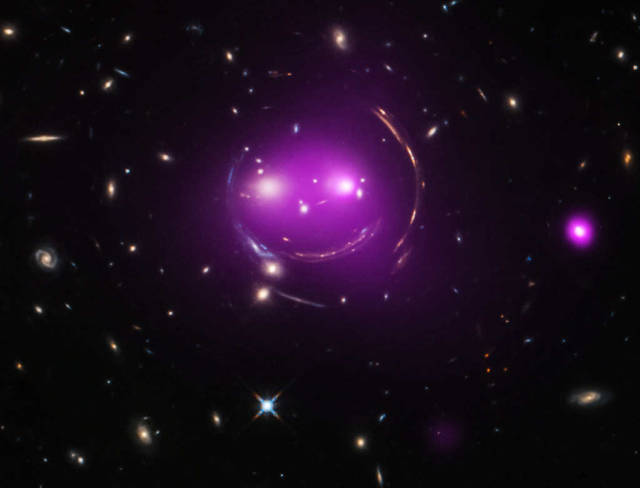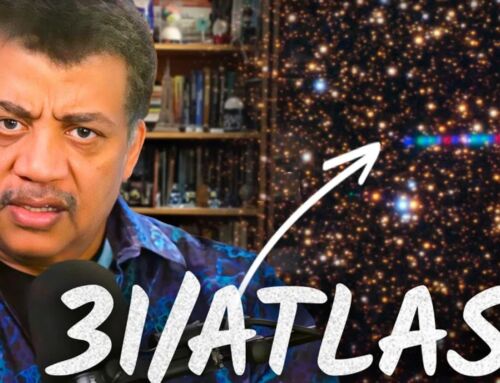The cat-like features are actually distant galaxies whose light has been stretched and bent by the large amounts of mass contained in foreground galaxies. The effect called “gravitational lensing,” predicted by Einstein‘s Theory of General Relativity that is celebrating its 100th anniversary.
Albert Einstein’s general theory of relativity, published 100 years ago this month, predicted the phenomenon of gravitational lensing. And that’s what gives.
Nicknamed the Cheshire Cat galaxy group, the group’s two large elliptical galaxies are suggestively framed by arcs. The arcs are optical images of distant background galaxies lensed by the foreground group’s total distribution of gravitational mass dominated by dark matter. In fact the two large elliptical “eye” galaxies represent the brightest members of their own galaxy groups which are merging. Their relative collisional speed of nearly 1,350 kilometers/second heats gas to millions of degrees producing the X-ray glow shown in purple hues. Curiouser about galaxy group mergers? The Cheshire Cat group grins in the constellation Ursa Major, some 4.6 billion light-years away.






Leave A Comment